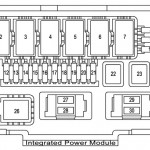Increasing Power Density and Conversion Efficiency-Key for Power Module Makers

Power module market is promising whose sales in China are projected to reach around 4.447 billion yuan in 2013. In the next few years, around 11% of growth rate will go on, and revenue expect jumping to 5.514 billion yuan by 2015, according to survey data from CCID Consulting.
However, situation for manufacturers is not optimistic, due to fierce competition, heating price war as well as the resulting corporate merger and acquisition. From the entire product supply perspective, the current market is in oversupply oversupply case.
Key-increasing power density and conversion efficiency
This is especially important in communication field. “Taking data processing application as an example, smartphone, internet, social network, search tools, cloud computing and other applications generates mass data, which posts huge demand for server data center and leads to staggering power consumption, so energy efficiency is a major factor data center must consider,” said Huang Ruowei, vice president of sales of Vicor in Asia Pacific.
He added “To meet the escalating market requirements, power module manufacturers are improving the energy efficiency of power supply module at one percent point, even a fraction of a percent; but due to limitations of the existing converter topologies, it is hard for manufactures to advance; they have to change from two aspects: efficiency of the distribution structure and core technologies of power module.”
Manager of SynOor in China, Alan Yuan also says “Module, standardization, miniaturization, systematization are total requirements for power module product. Specifically, module should enables more convenient product design and installation; standardization ensures compatibility of material selection and product upgrading; miniaturization saves space, improve performance; systematization help customer build holistic solutions.”
Currently, SynQor’s all product lines use module design, and developed a different power levels of product available to customers in the same-size brick products. Alan stressed traditional power module mainly aim at secondary power, namely DC-DC converter; but now, increasing application demand need introduction of such 220VAC AC input, DC-AC conversion technologies; then on the topology side, mature devices are needed to support design; in addition, space size also requires power module with high-power density, high efficiency and thermal design.
In terms of new power devices, Gene Kim, direction of marketing strategy in Fairchild, says, “performance of silicon-based power devices is very important to power module, for advanced silicon technology enables achieving high levels of robustness, high performance and small chip size; on the other hand, packaging technology evolution is a challenge, namely how to effectively reduce the thermal resistance, or stably manufacturability of single package with 20 dies and 80-100 bonding wires.”
Major reasons for higher power density and conversion efficiency includes: first, industries post higher requirement for product integration while corresponding power size should be as small as possible; second, for consideration of green, energy saving and environmental protection, power module should improve conversion efficiency. Furthermore, low noise and low radiation are also the development mainstream.
